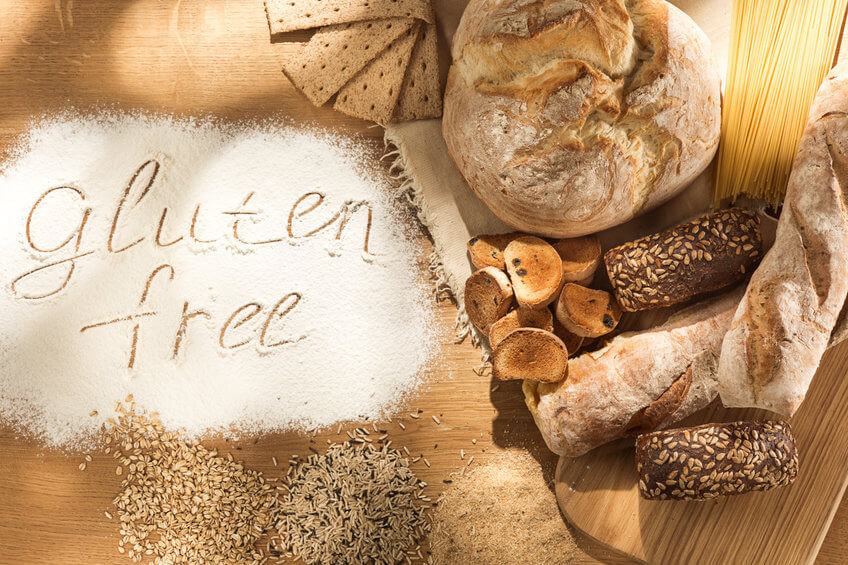If you’re anything like me, you didn’t grow up knowing anything about tapioca besides its use in delicious tapioca puddings, or perhaps bubble tea with tapioca pearls. Now, with the rising numbers of people who have begun eating gluten-free, tapioca flour has become a hot topic. When you compare it with all the other types of gluten-free flour on the market, what are the benefits of cooking with tapioca flour?
First, What in the World Is Tapioca?
Tapioca is technically a starch that comes from the cassava root (also known as manioc, yuca, and Manihot, this tuber is a traditional food staple in South America, with origins in Brazil.)
Tapioca flour is not the same as cassava flour, however. Cassava flour is simply ground cassava root, whereas tapioca flour is made by extracting the starchy liquid from cassava root and then allowing the liquid to evaporate—leaving behind a fine, starchy powder.
Tapioca is sold in several forms, including flour, meal, flakes, and pearls. Thanks to its rise in popularity as an alternative to the more traditional glutinous grains, it can usually be easily found in your local health food store.
Why Should I Cook With Tapioca Flour?
Tapioca flour has many benefits that cannot be ignored. Let’s unpack them here!
1. It Has No Common Allergens
While many people are finding that their body prefers a gluten-free diet, this switch can present a problem for those with a nut allergy: some alternative flours are made from nuts, such as almond flour, hazelnut flour, coconut flour, and other “nut flour blends.”
Tapioca flour is free of all major allergens, including grains, gluten, dairy, fish, eggs, soy, and nuts, making it a fantastic choice for those looking for an allergen-free flour alternative.
If you’re trying to cook or bake for someone who has multiple allergies and you want to keep them safe, tapioca flour is a great thing to keep on hand!
2. Tapioca Is Easy On The Stomach

This tuber-root-based product has a reputation as an easy-to-digest flour alternative, which is one of the best benefits of cooking with tapioca flour.
Doctors have been known to recommend the use of this product for people who struggle with various digestive diagnoses (such as irritable bowel syndrome (IBS) or diverticulitis) due to its gentle effects on digestion.
3. It Can Help With Weight Gain
For those who are underweight and need a little help putting on the pounds, tapioca flour can be a great option.
Since it is a starchy carbohydrate, it is high in calories but low in harmful elements like saturated fat, cholesterol, sodium, and refined sugars. This can make tapioca flour worth adding as a beneficial option for those who are looking for a healthier way to gain weight.
4. Out of Cornstarch? Try Tapioca Flour!
You’re in the middle of making dinner, and suddenly you discover you’ve run out of a pantry staple—how are you going to thicken your soup without cornstarch?
Tapioca flour is an even better thickener than wheat flour, due to its high starch content; it also has a very neutral flavor and thickens dishes quickly.
Try adding it to soups, sauces, and gravies for a wonderful silky texture. If you’re substituting tapioca flour for cornstarch, it’s an easy 1:1 ratio (1 tablespoon of tapioca flour is equivalent to 1 tablespoon of cornstarch.)
This is one of the benefits of cooking with tapioca flour: it’s an incredibly versatile product, worth keeping in your pantry for more reasons than one!
5. You Can Bake in Advance
Some cooks and bakers have noted that tapioca flour freezes and thaws better than typical flours and starches. This is good news if you’re looking to bake your famous dessert or favorite breads and rolls days or weeks before an event.
Try switching out your usual wheat flour or gluten-free flour choices in favor of tapioca flour, and you’ll be able to easily store your baked goods in the freezer without losing anything in the way of taste or texture.
6. Tapioca Flour Is an Easy Gluten-Free Swap

If you’ve recently gone gluten-free, you may be overwhelmed by the necessary lifestyle changes.
As anyone who has had to cut a particular food out of their diet knows, you don’t realize how many products that food is in until you start reading labels. Switching to gluten-free can be especially difficult for those who love to bake, as most baking recipes are dependent on a base of all-purpose wheat flour.
One of the absolute best benefits of cooking with tapioca flour is that it can be substituted for wheat flour on a rough 1:1 basis. No more trying to figure out ratios and mix different kinds of flour to achieve the desired effect.
Give tapioca flour a try, and get back to enjoying baking again (yes, even gluten-free!)
7. It Has Little to No Flavor
Unlike most alternative flours, tapioca flour is basically flavorless.
While almond, hazelnut, coconut, and even cassava flours are known for having a nutty taste, tapioca flour doesn’t really have a flavor at all.
This is yet another one of the many benefits of cooking with tapioca flour: the flavor of your dishes will not be changed or affected when you use it.
This, along with the other things previously mentioned, means that tapioca flour really is the superior gluten-free/wheat flour alternative.
Summing up the Benefits of Cooking With Tapioca Flour
As you can see, there are many reasons why you should give tapioca flour a try. It’s easy on the stomach and free of all common allergens. It makes a great thickener for soups, sauces, and gravies, especially if you can’t use regular flour or you don’t happen to have cornstarch on hand.
Best of all, it’s a fantastic gluten-free swap that freezes well, has an easy substitution ratio, and won’t change the flavor of your favorite dishes or baked goods! This flour substitute could quickly become your new pantry staple, so give it a try today!

